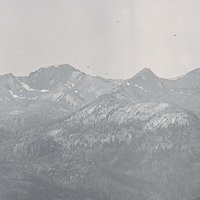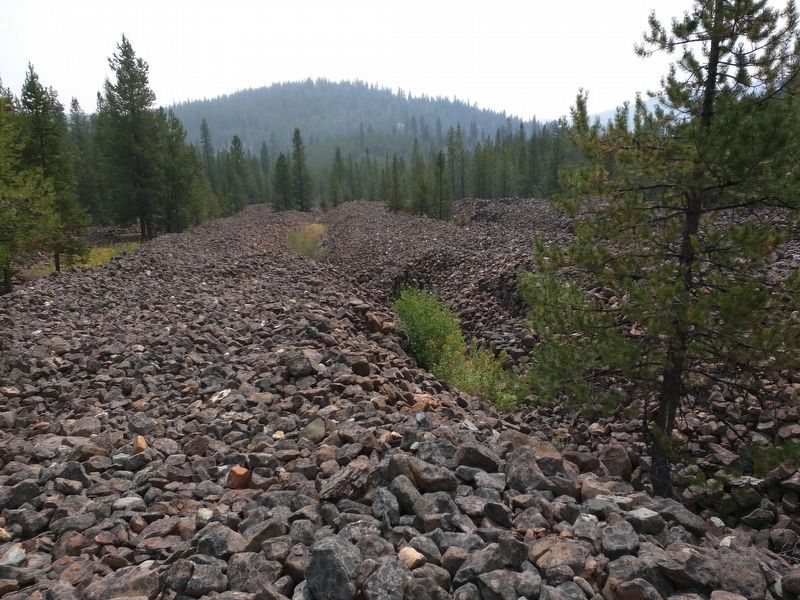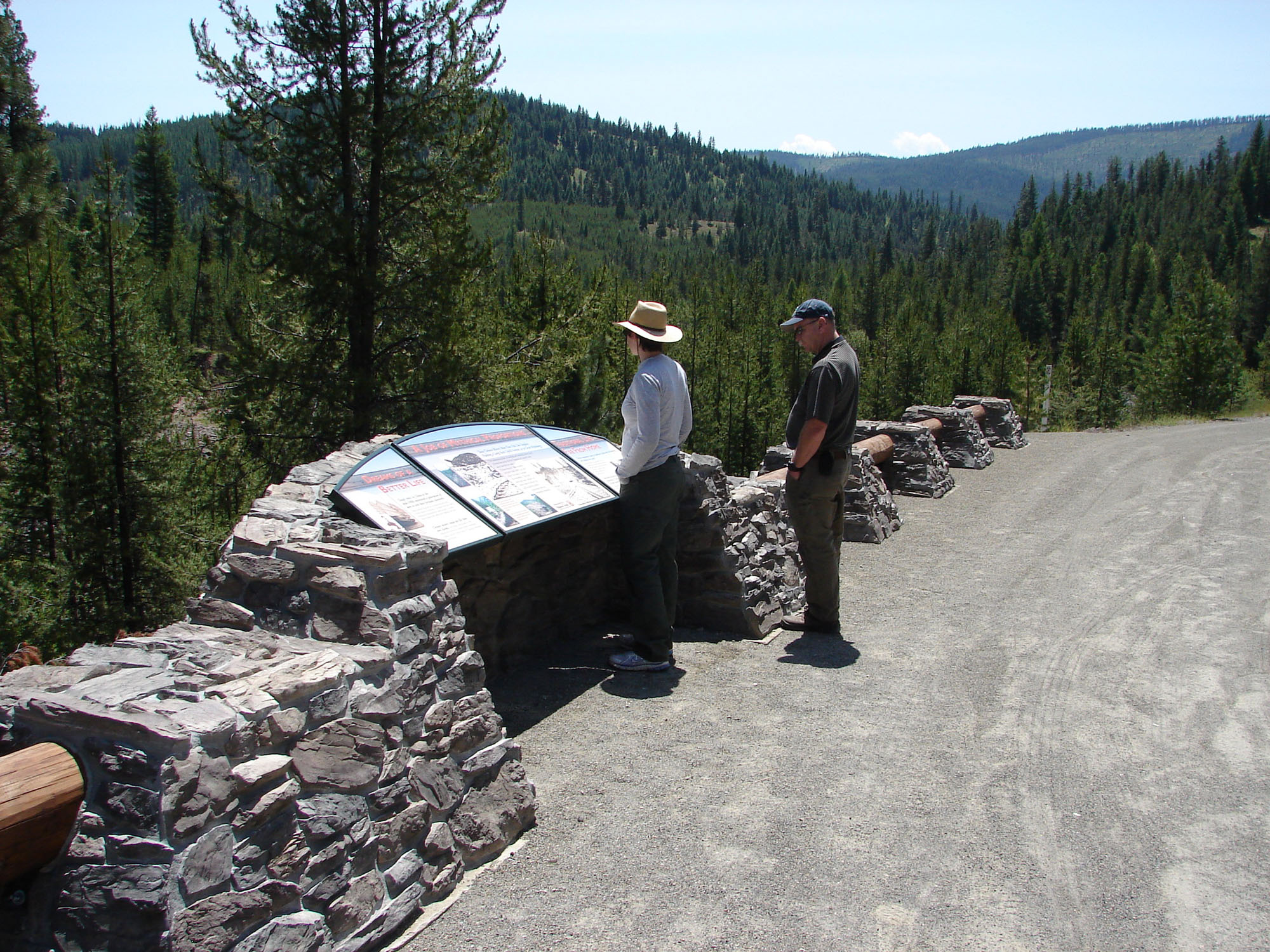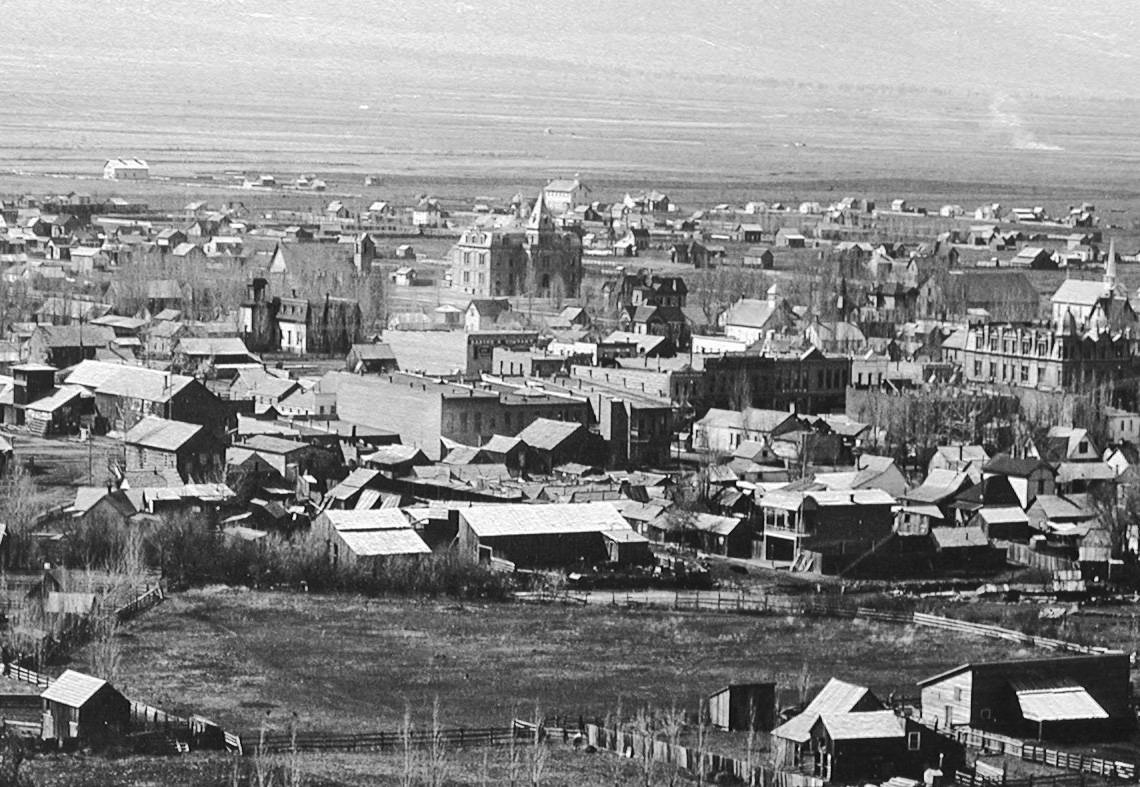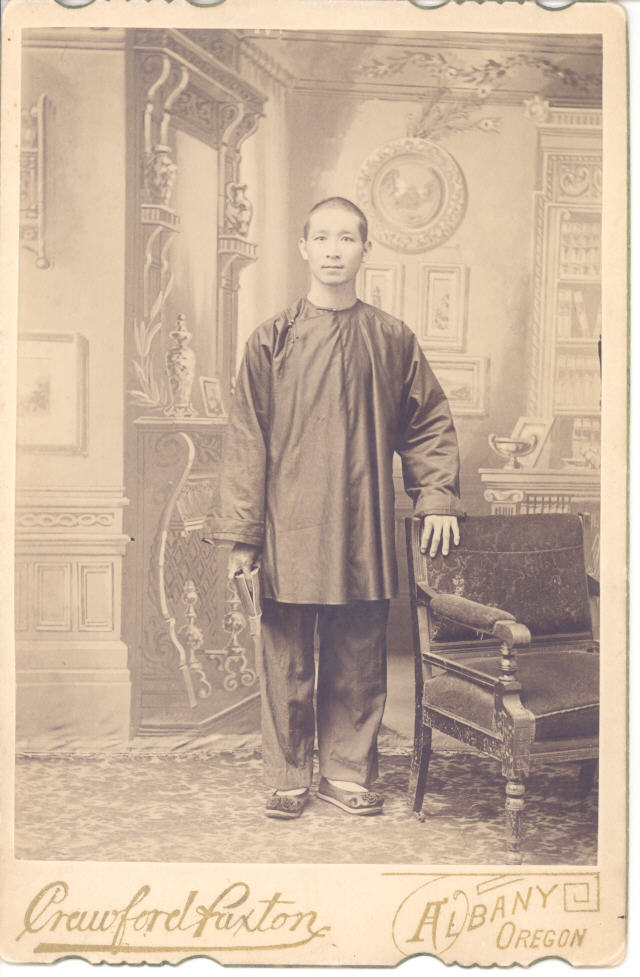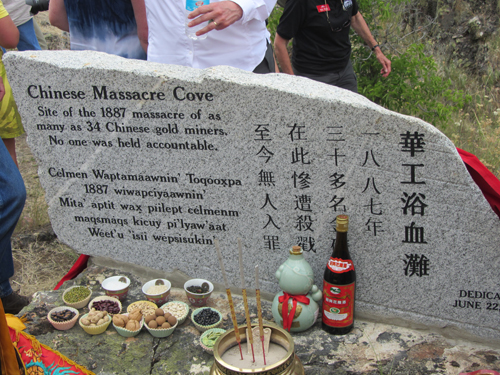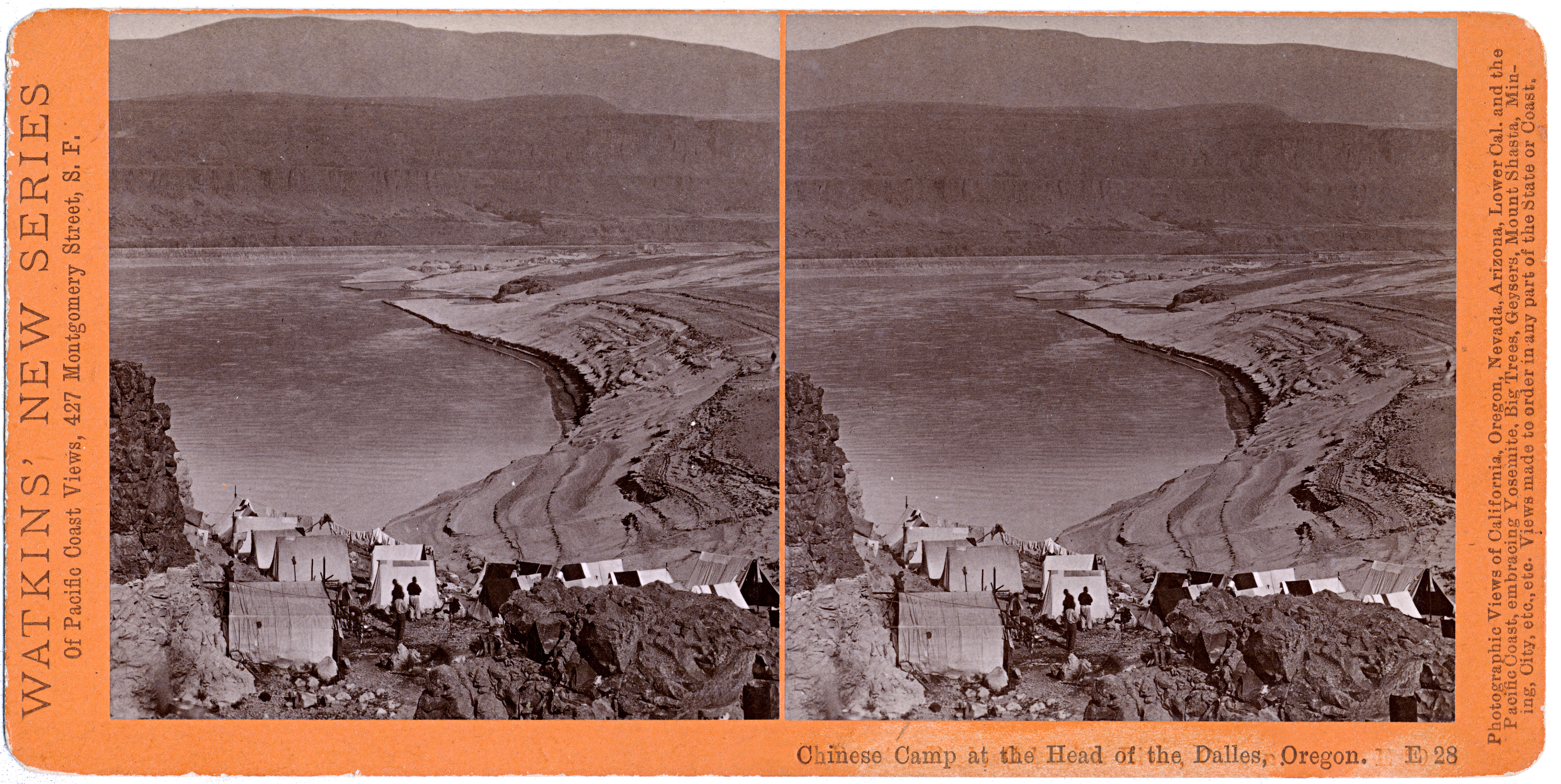The Ah Hee Diggings, also called the Chinese Walls, are sixty acres of hand-stacked, winding rock walls constructed of placer mine tailings. The walls were built by Chinese miners who worked gold-mining claims for the Ah Hee Placer Mining Company along a five-mile stretch of Granite Creek from 1867 to 1891. The Grant County claim, located on Granite Creek east of Forest Road 73 on the Wallowa-Whitman National Forest, is one mile north of present-day Granite. Its handcrafted walls document Chinese placer-mining camps, and its archeological information makes it an important Oregon heritage site.
In addition to several rows of walls, remains at the Ah Hee Diggings include a terrace where food was prepared and served, at least one habitation area, and an interconnecting ditch system, the most prominent of which drew water from Last Chance Creek. More than three miles long, the intricate ditches supplied water for ground sluicing, hydraulicking, and box sluicing.
U.S. census records list 337 Chinese miners on the site in 1870, the height of Chinese habitation, when 81.5 percent of the precinct’s residents were Chinese. Artifacts, mining records, oral historians, the Grant County News, and Granite store ledgers provide evidence that gardening, blacksmithing, leisure activities, and hunting took place at or near the site.
With coordination from the U.S. Forest Service, University of Idaho archeologist Priscilla Wegars and a team of Passport in Time volunteers excavated the site in 1985 and from 1990 to 1994. They unearthed parts of several structures, including a terraced cooking and eating area separate from dwelling remains, thought to be unique to the layout of Chinese camps occupied during the period. Over 4,000 artifacts, including mining implements, household bowls, wok parts, and foodstuff tins were also unearthed and catalogued. The artifacts and documentation are housed at the Baker Ranger District Office in Baker City.
-
![]()
Ah Hee Diggings.
Courtesy Don Hann, USDA Forest Service
-
![]()
Ah Hee Diggings.
Courtesy U.S. Forest Service
-
![]()
Ah Hee Diggings.
Courtesy Don Hann, USDA Forest Service
Related Entries
-
![Baker City Chinatown]()
Baker City Chinatown
For over seven decades, Baker City had an area referred to as Chinatown…
-
![Chinese Americans in Oregon]()
Chinese Americans in Oregon
The Pioneer Period, 1850-1860 The Cantonese-Chinese were the first Chi…
-
![Chinese Massacre at Deep Creek]()
Chinese Massacre at Deep Creek
Of the many crimes and injustices committed against early Chinese immig…
-
![Chinese mining in Oregon]()
Chinese mining in Oregon
The city of Guangzhou (formerly known to Westerners as Canton) is the c…
Related Historical Records
Map This on the Oregon History WayFinder
The Oregon History Wayfinder is an interactive map that identifies significant places, people, and events in Oregon history.
Further Reading
"Chinese Heritage Tour of the West: Exploring the uncovered heritage of early Chinese American pioneers over a seven-day tour." Wing Luke Museum of the Asian Pacific American Experience web log, July 20-16, 2010, http://db.wingluke.org/tourblog/.
Steeves, Laban Richard. Chinese Gold Miners of Northeastern Oregon, 1862-1900. MS thesis, University of Oregon, 1984.
Tabor, James Waucop. Granite and Gold: The Story of Oregon’s Smallest City. Baker, Ore.: Theresa Tabor Fowler, 1988.
Wegars, Priscilla (with Appendix by Deborah L. Olson). The Ah Hee Diggings: Final Report of Archaeological Investigations at OR-GR-16, The Granite, Oregon “Chinese Walls” Site, 1992 Through 1994. University of Idaho Anthropological Reports, No. 97. Moscow, ID: University of Idaho Alfred W. Bowers Laboratory of Anthropology, 1995.

